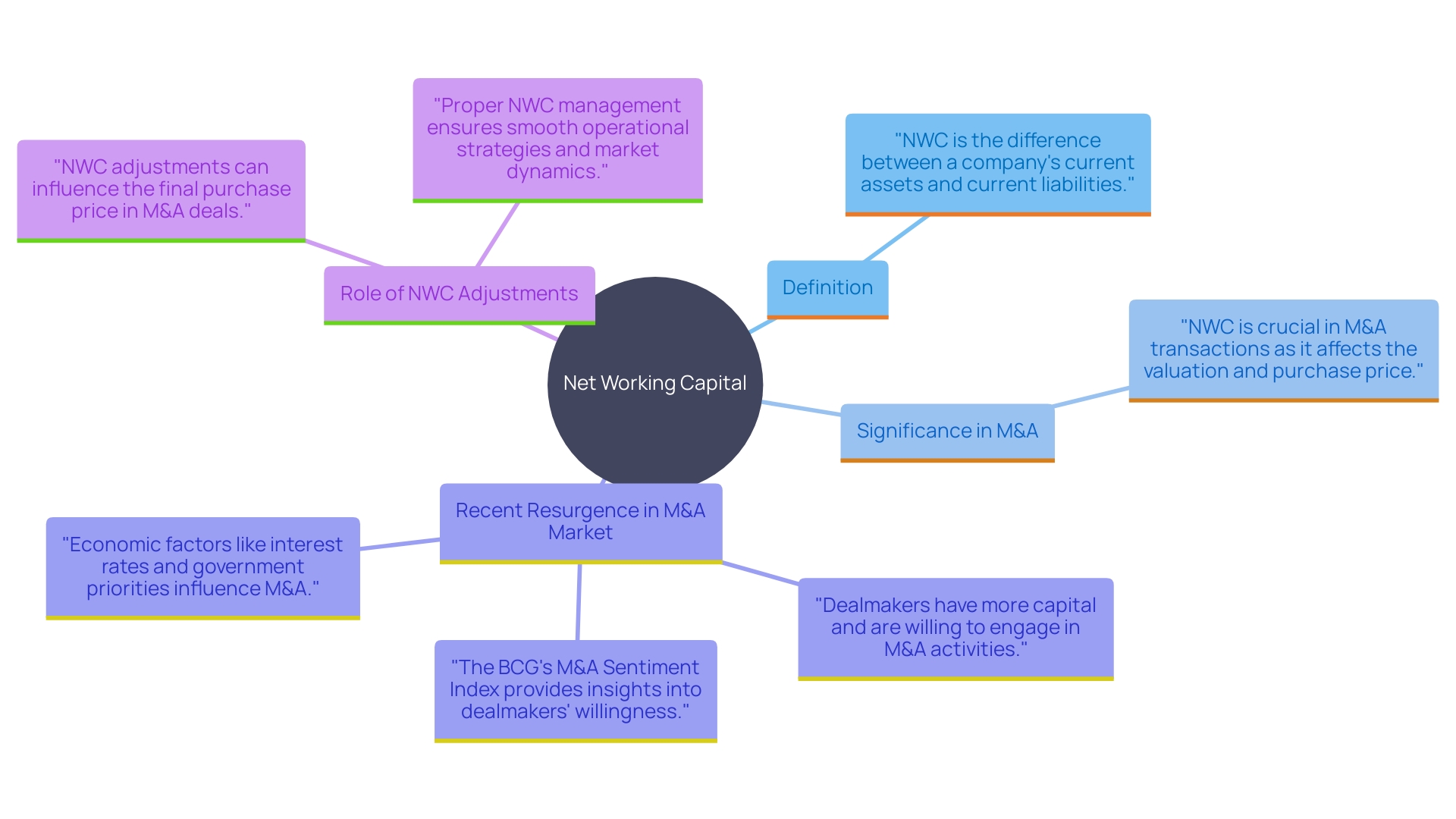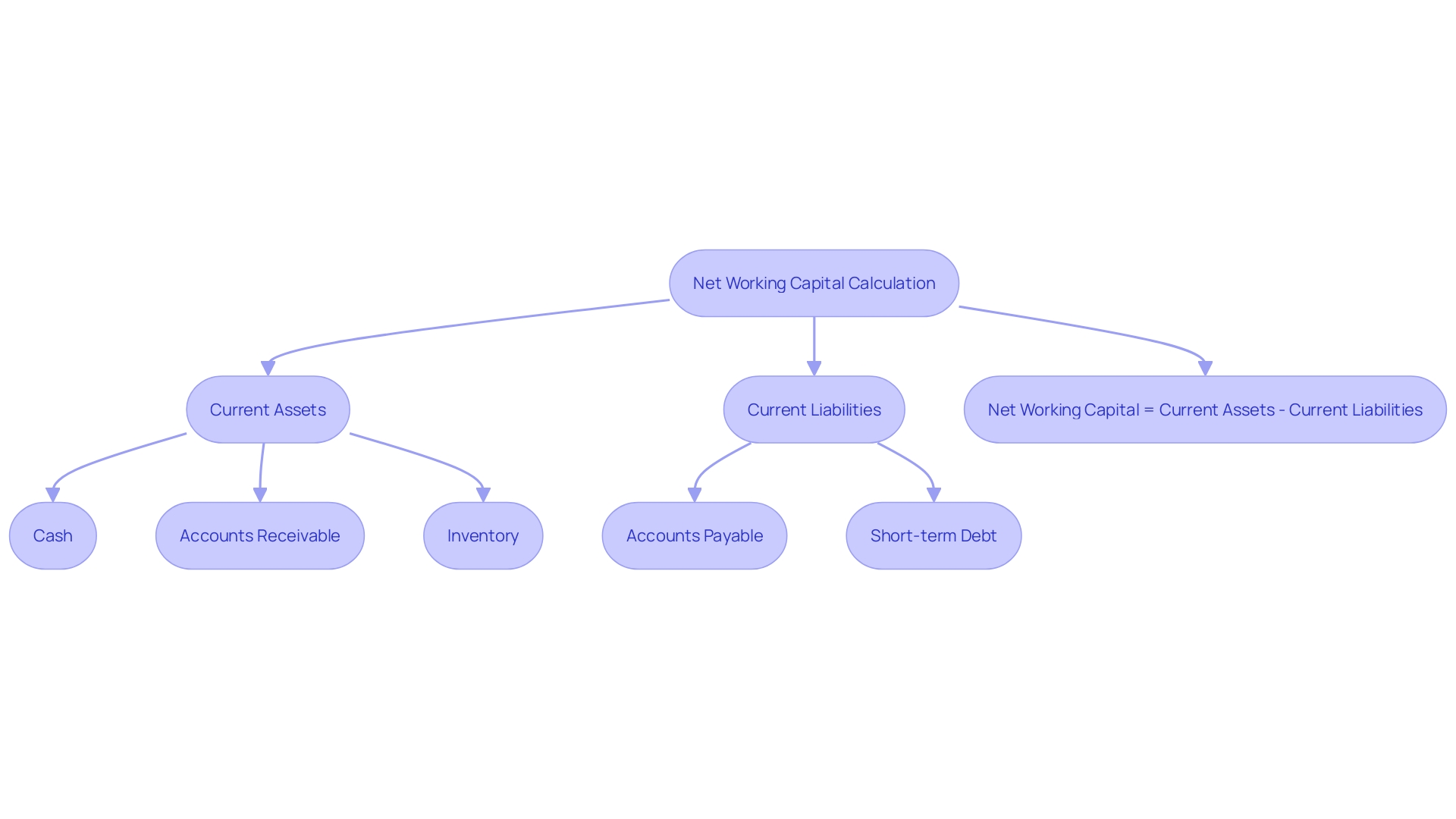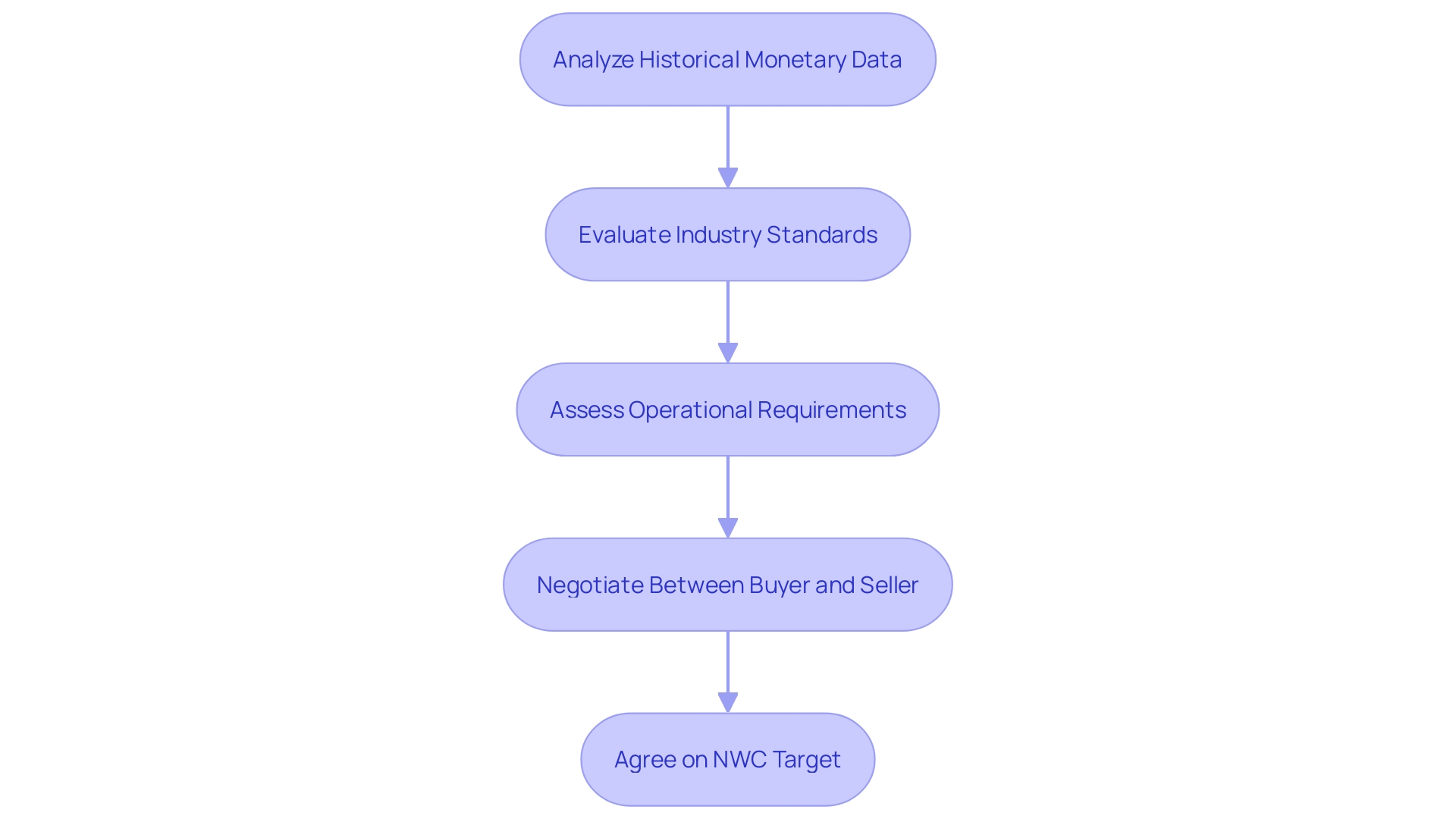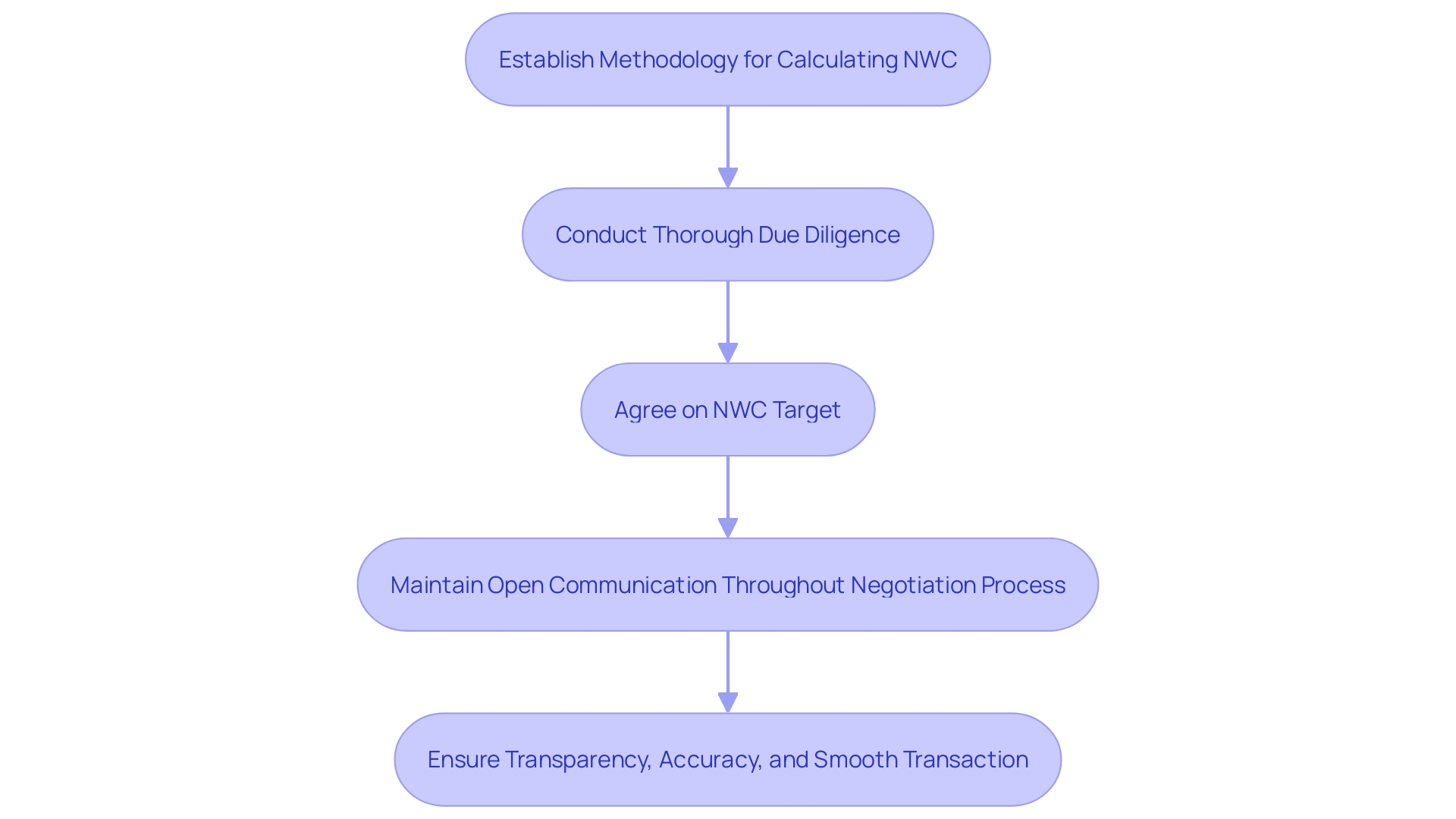Introduction
In the dynamic landscape of mergers and acquisitions (M&A), understanding and managing Net Working Capital (NWC) is fundamental for ensuring successful transactions. NWC, representing the difference between a company's current assets and current liabilities, serves as a critical indicator of a company's short-term liquidity and operational efficiency. The resurgence in M&A activity, highlighted by a significant increase in transactions, underscores the importance of precise NWC adjustments.
Accurate NWC calculations can significantly influence purchase prices and valuations, impacting the strategic outcomes of deals. This article delves into the intricacies of NWC, from its calculation to the establishment of NWC targets, and addresses common challenges and best practices in managing NWC adjustments. By providing practical advice and solutions, this guide aims to equip financial leaders with the knowledge to navigate the complexities of NWC in M&A transactions effectively.
Definition and Importance of Net Working Capital
Net Working Capital (NWC) is a vital financial indicator that signifies the difference between an organization's current assets and current liabilities. It acts as a sign of an organization's short-term liquidity and operational efficiency. Maintaining an optimal level of NWC is essential for ensuring that a business can meet its short-term obligations, invest in its operations, and sustain growth. In the context of mergers and acquisitions (M&A), understanding NWC is vital as it directly impacts the purchase price and the overall valuation of the target entity.
'Notably, the M&A market has seen a resurgence, with 75 deals announced in Q2 2024, marking a 15.4% increase relative to Q2 2023.'. This increased activity emphasizes the significance of NWC adjustments as companies aim to enhance their economic positions during acquisitions. Experienced acquirers, who have consistently outperformed their less active counterparts, understand that precise NWC adjustments can significantly influence deal outcomes.
For instance, regulatory requirements and the need for stronger internal controls are driving consolidation in various sectors. In the energy industry, despite a previous slump, 2023 saw two of the largest acquisitions in over a decade, signaling a move towards well-structured deals that create value. This trend highlights the necessity for acquirers to thoroughly analyze NWC to ensure they are not overpaying and can achieve the desired synergies post-acquisition.
Furthermore, the M&A Sentiment Index provides a valuable tool for dealmakers to gauge market sentiment and make informed decisions. By grasping NWC adjustments, they can better manage the intricacies of dealings, ensuring they align with their strategic objectives and monetary aims.
In summary, Net Working Capital adjustments are integral in the M&A process, impacting purchase prices and overall valuations. As the market continues to evolve, remaining skilled in managing NWC will be essential for attaining successful results in dealings.

Net Working Capital Calculation: Current Assets minus Current Liabilities
Net Working Capital (NWC) is calculated by subtracting current liabilities from current assets. Current assets encompass cash, accounts receivable, inventory, and other assets expected to be liquidated within a year. On the flip side, current liabilities include obligations like accounts payable, short-term debt, and accrued expenses that are due within the same period. Accuracy in determining NWC is essential during mergers and acquisitions (M&A) discussions as it offers a clear view of the target firm's economic condition and helps in setting a fair deal price. According to a recent comprehensive study, understanding the nuances of NWC adjustments can significantly impact the valuation discussions in M&A transactions, making it an indispensable component of due diligence.

Understanding the Net Working Capital Target (NWC Target)
The Net Working Capital Target (NWC Target) is a critical benchmark agreed upon by both the buyer and the seller to ensure the acquired entity operates effectively post-transaction. This target is crucial in maintaining economic stability and avoiding immediate liquidity issues. Establishing a realistic NWC Target requires a thorough analysis of historical monetary data, industry standards, and projected operational requirements. Both parties must meticulously negotiate and agree on this target to prevent disputes and facilitate a seamless transition. This process is similar to the strategic actions utilized by firms such as Bardell Venture Management, which harnessed monetary insights to enhance profitability and oversee growth efficiently.

Common Challenges and Disputes in Net Working Capital Adjustments
Disputes over Net Working Capital (NWC) are a common challenge during mergers and acquisitions (M&A). These conflicts often arise from different interpretations of current assets and liabilities, seasonal variations in working capital, and discrepancies in reporting. Such issues can lead to buyers adjusting the purchase price based on perceived shortfalls in NWC post-closing, resulting in potential conflicts.
Experienced acquirers, who have demonstrated success through frequent deals, often outperform their less active counterparts, highlighting the importance of experience in managing these disputes. For instance, companies that have consistently acquired businesses throughout economic cycles have shown superior shareholder returns. This underscores the value of clear communication and precise definitions in the purchase agreement to mitigate these issues.
Historical data and case studies reveal that meticulous due diligence and leveraging advanced tools like web scraping and expert networks can provide deeper insights into target businesses, further reducing the risk of NWC disputes. Moreover, following rigorous accounting reporting standards and including comprehensive terms in purchase contracts can avoid inconsistencies and promote smoother dealings.
Addressing these challenges head-on with robust strategies and clear terms can significantly streamline the M&A process, ensuring both parties are aligned and reducing the likelihood of post-closing disputes. As frequent acquirers have shown, a well-defined approach to managing NWC can lead to more successful and profitable acquisitions.
Best Practices for Managing Net Working Capital Adjustments in M&A
Effectively managing Net Working Capital (NWC) adjustments during M&A transactions requires a strategic approach. First, it is essential to establish a clear and consistent methodology for calculating NWC, meticulously defining and documenting current assets and liabilities. This ensures transparency and accuracy, which are critical for all parties involved.
Conducting thorough due diligence is the next crucial step. This involves a comprehensive examination of monetary statements, operational metrics, and potential liabilities that could impact NWC. Quality due diligence can help identify hidden risks and opportunities, providing a clearer picture of the target company's financial health.
Both parties must agree on the NWC Target and establish a well-defined process for post-closing true-ups. This agreement helps prevent disputes and ensures that any necessary adjustments are made fairly and promptly, maintaining the integrity of the deal.
Maintaining open lines of communication throughout the negotiation process is vital. By fostering transparent and ongoing dialogue, parties can address emerging concerns swiftly, mitigating risks and ensuring a smoother process.
Experience plays a significant role in the success of these practices. Frequent acquirers, who have honed their skills through numerous deals, tend to outperform their less experienced counterparts. They achieve higher shareholder returns and navigate the complexities of M&A with greater efficiency. Therefore, leveraging experience and best practices can lead to more successful NWC adjustments and overall transaction outcomes.

Conclusion
Understanding and managing Net Working Capital (NWC) is pivotal in the realm of mergers and acquisitions. By accurately calculating NWC, organizations can ascertain a target company's short-term liquidity and operational efficiency, which are critical for determining purchase prices and valuations. The resurgence of M&A activity emphasizes the need for precise NWC adjustments, as these can significantly influence deal outcomes and strategic objectives.
Establishing a clear NWC Target is essential for ensuring that the acquired entity operates effectively post-transaction. This involves thorough analysis and negotiation between both parties to avoid disputes and facilitate a seamless transition. Common challenges, such as differing interpretations of current assets and liabilities, can lead to conflicts that may affect the transaction's integrity.
Thus, clear communication and precise definitions in purchase agreements are indispensable.
Best practices for managing NWC adjustments include establishing consistent methodologies for calculations, conducting thorough due diligence, and agreeing on post-closing true-ups. These practices not only streamline the M&A process but also enhance the likelihood of achieving successful and profitable acquisitions. Experience in navigating these complexities is invaluable, as frequent acquirers tend to outperform their less active counterparts, underscoring the importance of strategic NWC management in driving positive transaction outcomes.




